
Interior
There aren't any surprises when it comes to the interior, which is fairly run-of-the-mill and doesn't offer anything unique, but expecting anything along those lines is a tough ask at this price. However, including four digital RGB fans as standard is fairly impressive and will probably mean that you won't need to add any extra cooling, even if you're planning to house an overclocked, high-end system.
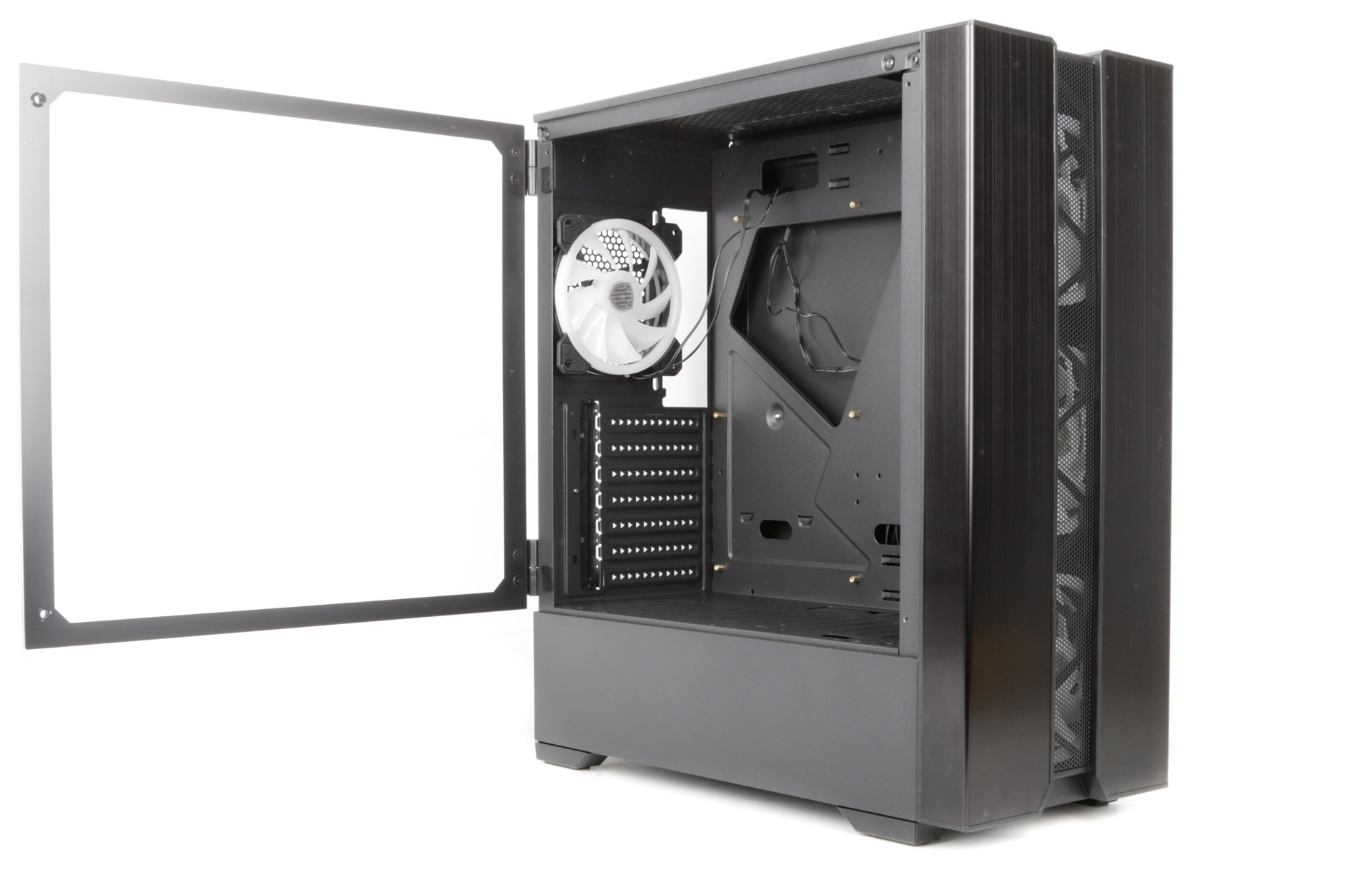
The lone rear 120mm fan is bullied by the trio of front 120mm fans, so we're looking at some serious positive air pressure here, and even adding an all-in-one liquid cooler to the roof would likely see air pressure balance out rather than become negative. Both the roof and front section can house either 240mm or 280mm half-height radiators, or of course you can replace the existing front fans with 140mm models. There's a decent amount of space between the front panel and motherboard so plenty of scope for mounting pumps and reservoirs here, making the Phalanx one of the best sub-£100 cases for water-cooling we've seen.
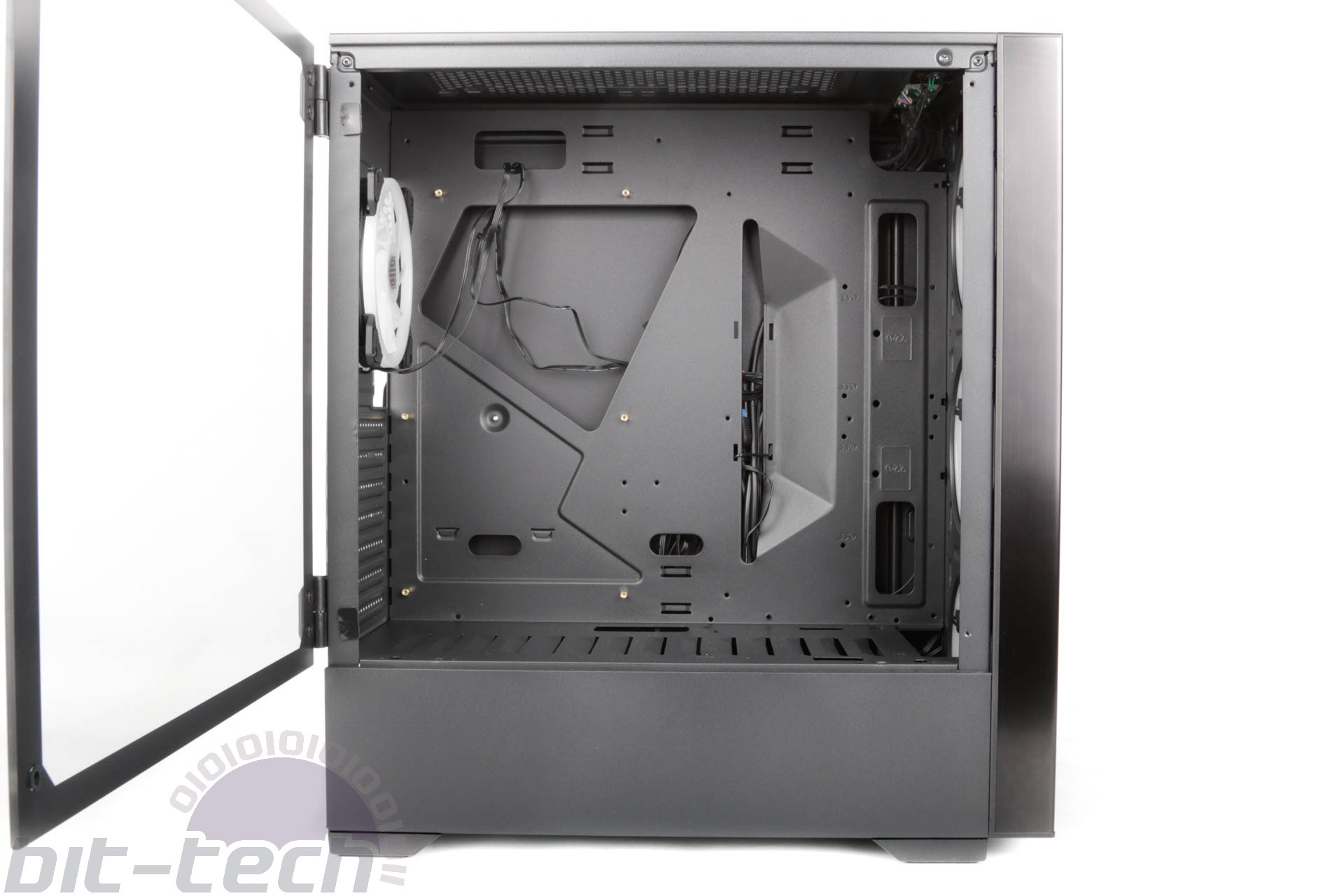
The glass side panel swings out once the thumb screws are removed, and it can be removed by lifting it off its hinges. However, it's not totally necessary to do so, as the hinges allow the panel to rotate outwards enough to lay on your desk.
Below you can see the roof fan mounts catering for 120mm and 140mm fans with enough space for a half-height radiator such as a Corsair H100i RGB Platinum or Deepcool Gamer Storm Captain 240 Pro.
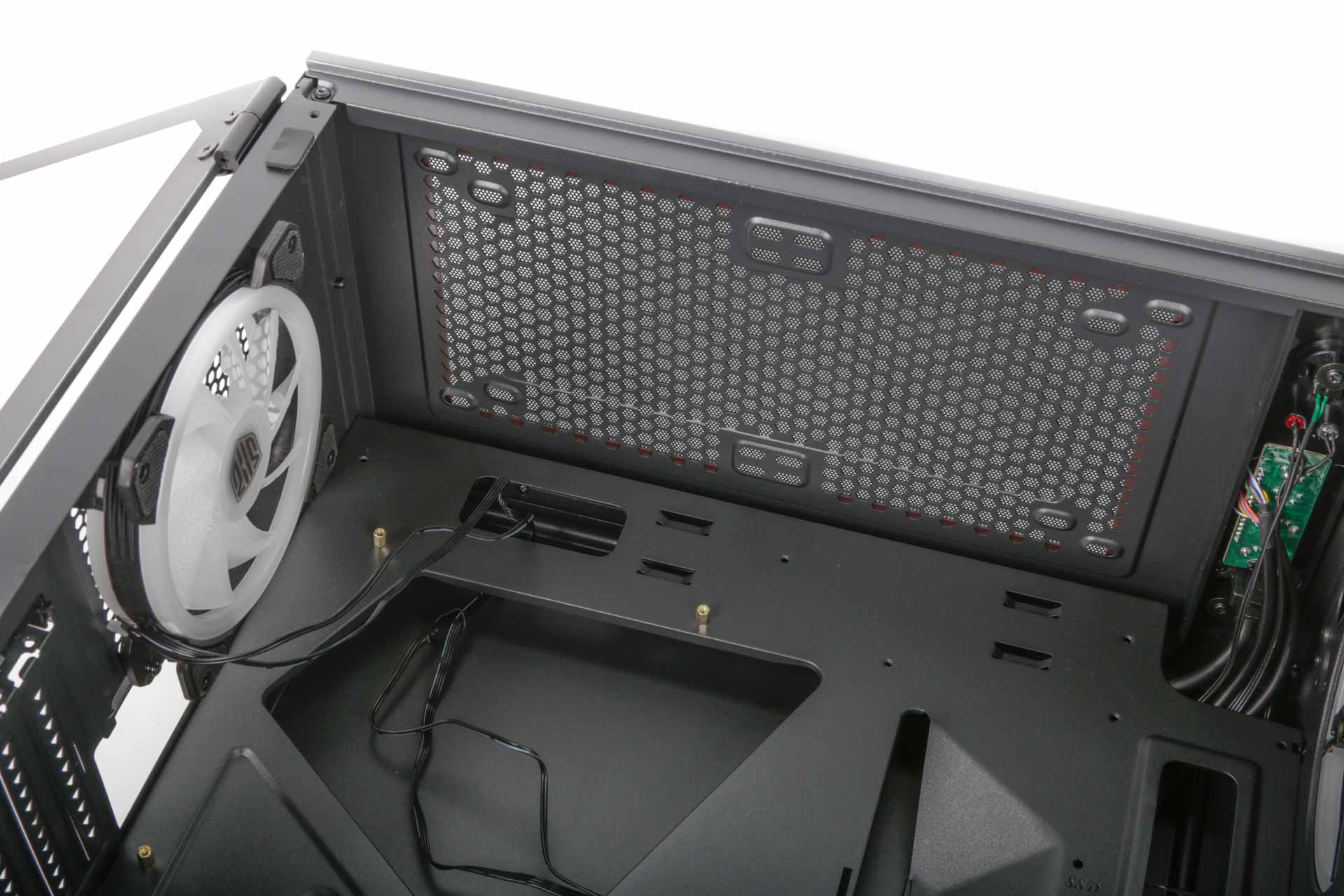
The front fans sit neatly in front of cut-outs, which remind us of a wind tunnel, and indeed they would help to direct airflow and prevent air spilling back out the front of the case. All their respective cables are neatly tucked away too.
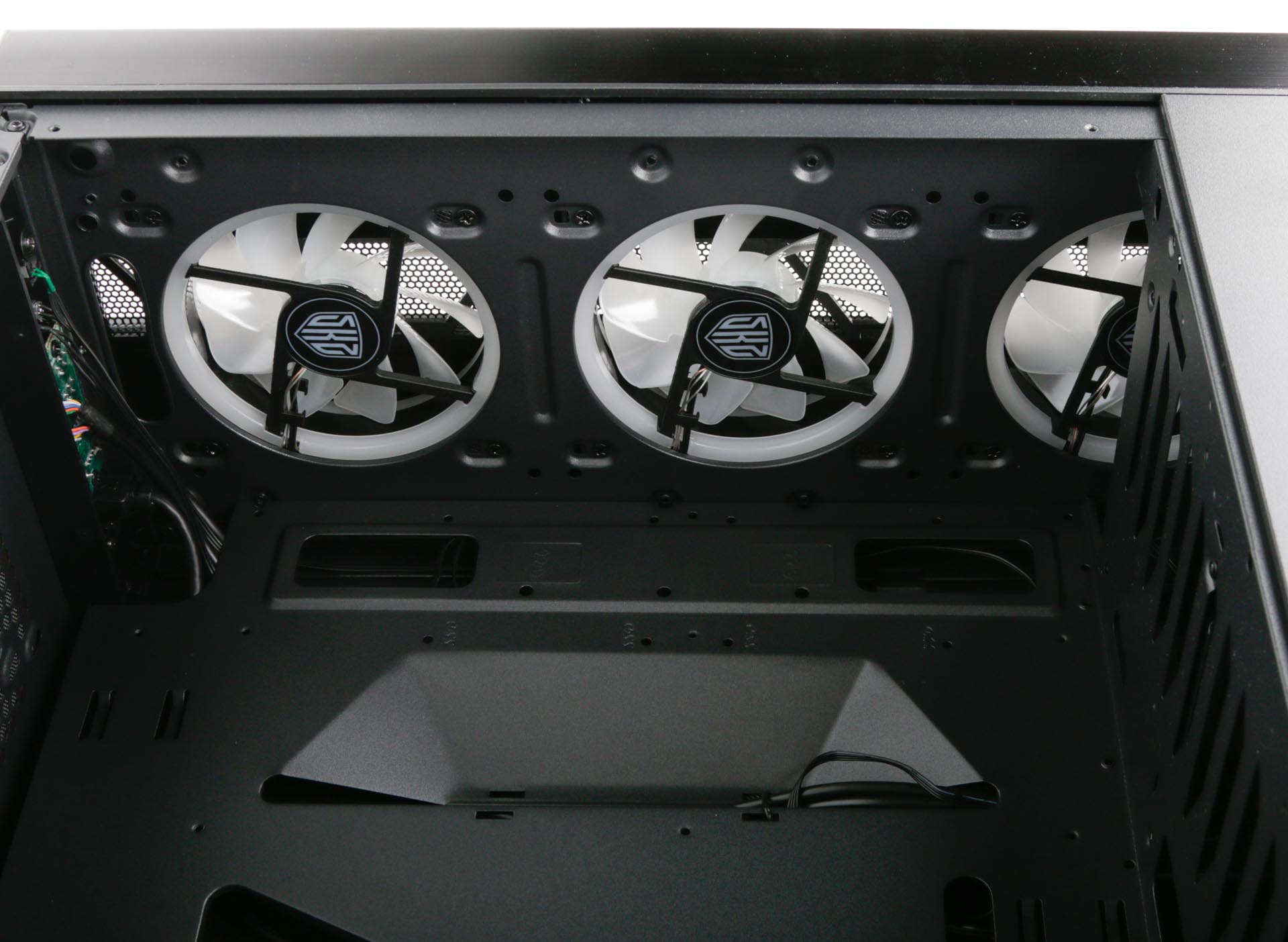
Cable tidying is fairly basic, with no rubber grommets and just a handful of cable ties included to get the job done. There's a large angled cut-out allowing the likes of the 24-pin ATX connectors to pass through to the motherboard, but the whole arrangement here doesn't lend itself particularly well to creating a tidy area, plus the clearance between the motherboard tray and side panel is modest too. That said, there's plenty of room to stow cables beneath the PSU cover.
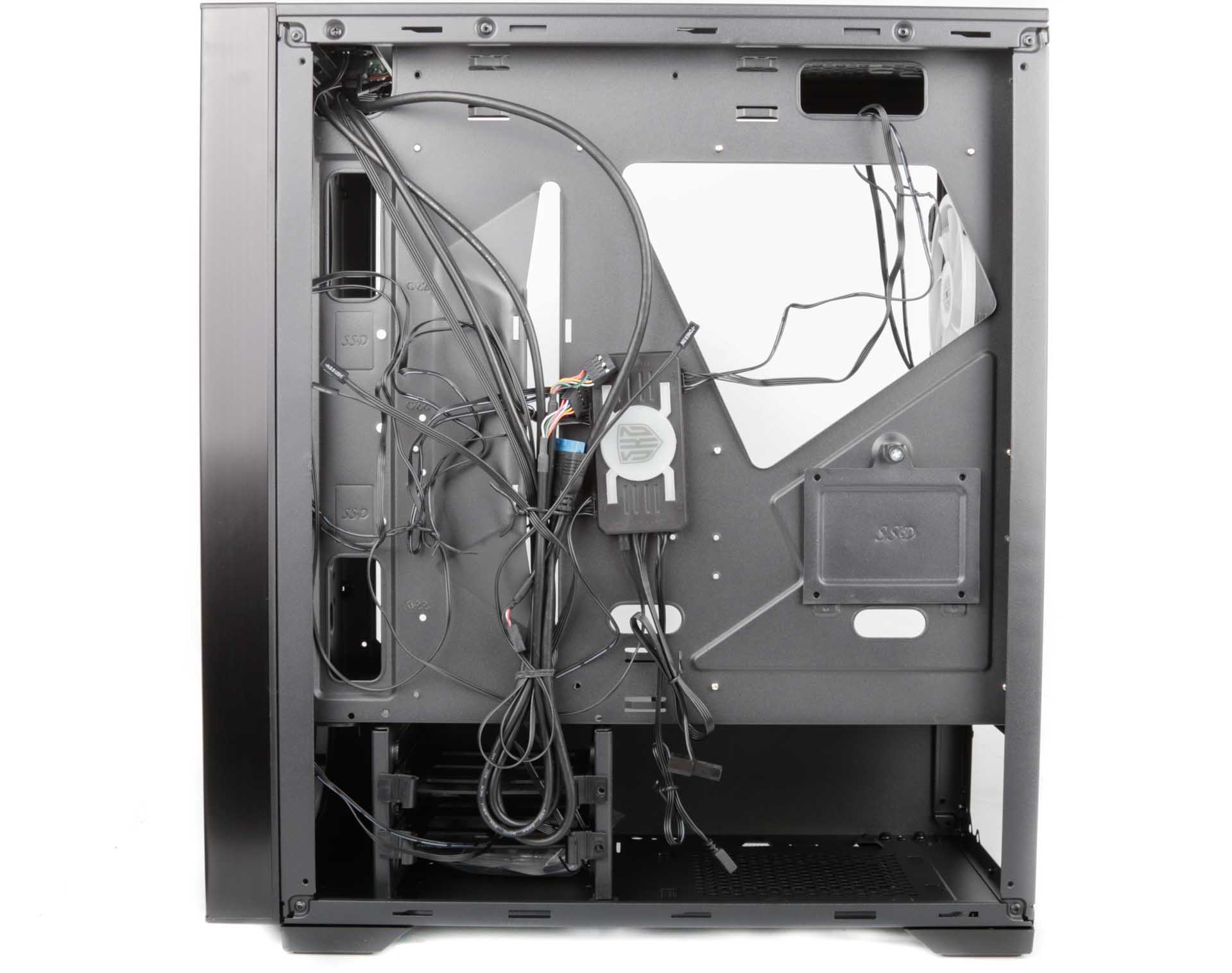
This is also where you'll also find the two 3.5"/2.5" trays in front of the PSU. A solitary 2.5" mount is found on a dedicated tray behind the motherboard, while two sets of drilled holes in the motherboard tray at the front of the case bringing the total dedicated 2.5" mounts to three.
The fan hub you can see is powered by a four-pin Molex connector and uses proprietary cables to power the fan blades as well as the lighting, which unfortunately means there's no way to control their speed nor add other fans. The lack of speed control really is a bummer; if you are going to use proprietary connections, you'd better make up for the fact you can no longer tap into motherboard fan control suites.
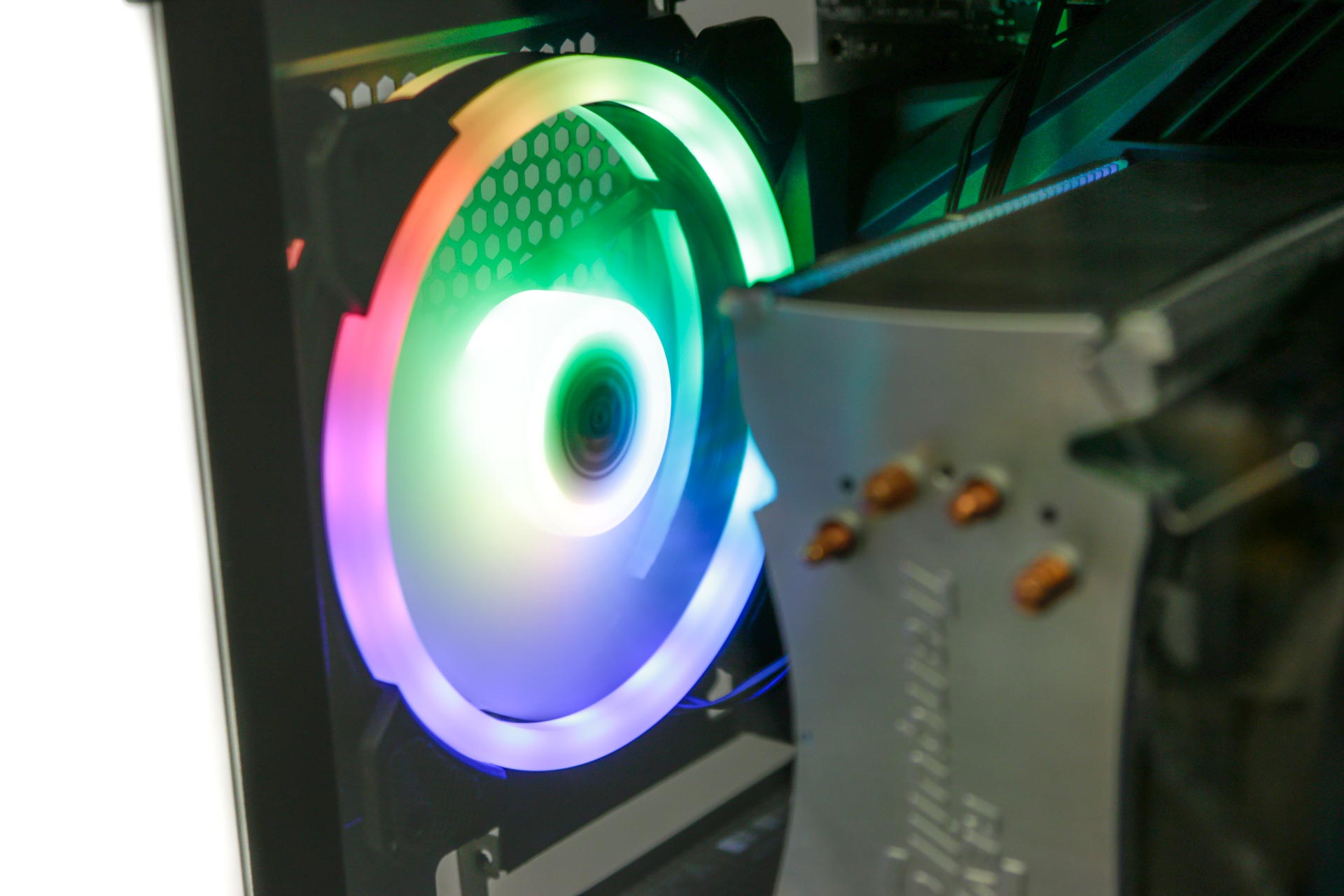
The lighting itself can be controlled using either a button on the front panel or a remote control, both of which offer a variety of effects and colours, but you can also hook up the three-pin RGB connector to your motherboard or third-party controller (purely for lighting, not speed). The fans are bright and vibrant but lack the punch of Corsair's recent efforts, although you'd need a side-by-side comparison to tell. For the cash, they're plenty bright enough. The actual LEDs sit everywhere apart from the exterior shroud, but even here the inner illuminated rings sit either side, and with the glowing central hub as well the majority of the fan ends up glowing.

MSI MPG Velox 100R Chassis Review
October 14 2021 | 15:04


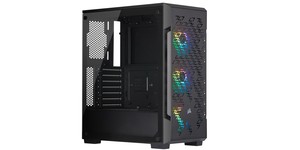





Want to comment? Please log in.